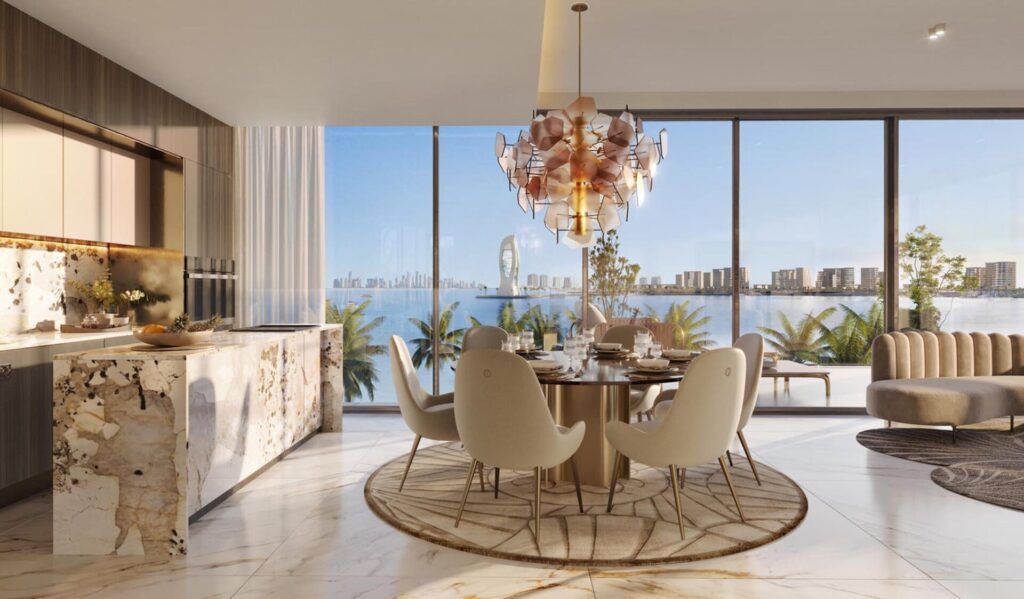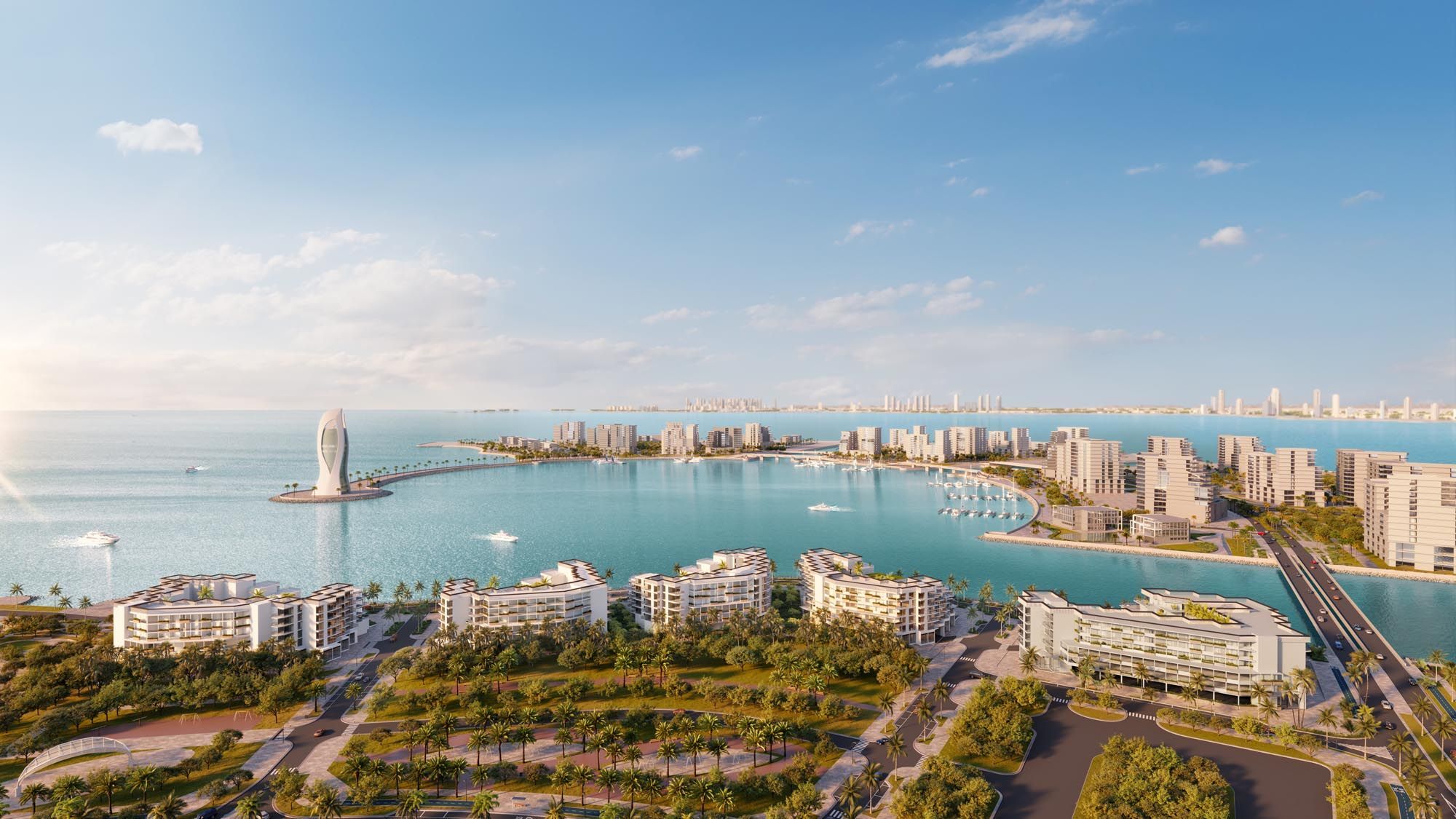The Cost of Living and Its Impact on Qatar's Real Estate Market
Qatar's real estate market is consistently growing, with estimates of its value reaching US$492.08 billion by 2029. As the nation moves toward meeting the targets of Qatar National Vision 2030, sustainable economic diversification remains a top concern.
One important factor shaping the market is the cost of living in Qatar—a big issue for investors and citizens. In this blog, we will look at the main elements influencing Qatar's real estate market, its future, and how DarGlobal keeps helping the country develop. But first, let’s take a closer look at the current state of Qatar’s real estate market.
Current State of Qatar's Real Estate Market
The Qatari real estate market continues to be lively, with demand changing for residential, commercial, and industrial buildings. Although upscale projects continue to sell well, the market has also seen increased demand for budget-friendly housing. The FIFA World Cup 2022 witnessed a real estate investment spree, but post-event corrections are redefining the industry now.
Some key trends in the Qatar housing market include:
- Increased availability of rent housing from excess in certain regions.
- Lowering rents in certain categories, making it more affordable for mid-income earners.
- Growing demand for freehold ownership among immigrants in areas identified for investment.
Factors Influencing the Real Estate Market
The Qatar real estate market is determined by various economic, political, and social factors. Ranging from government policies to infrastructure growth, these factors regulate property demand, prices, and investment potential. So, understanding these influences can help buyers and investors make informed decisions. Some of them are listed below:
1. Economic Indicators
The real estate market remains a great option for investment, with transactions reaching QR 1.04 billion ($836.7 million) in December 2024, as per the Ministry of Justice. The activity shows strong investor confidence and sustained demand for commercial and residential real estate, underpinned by economic stability, business growth, and growing infrastructure projects.
2. Population Demographics
As Qatar's population crossed 3 million in January 2025, real estate demand has increased manifold. Immigrants who migrated to work in energy, finance, and technology have increased both rental and bought property demand. Thus, due to the rise in urbanization, real estate developers are catering to the diverse housing demands and are expanding the real estate industry to new horizons.
3. Government Policies
Investor-friendly policies such as the Qatar Investor Visa (Golden Visa) heavily increase foreign investment. A USD 200,000 investment secures a one-year residency, while a USD 1 million five-year investment earns permanent residency. Such policies make it more attractive to own property, promoting Qatar's thriving real estate market.
Impact of Cost of Living on Real Estate
The cost of living Doha, Qatar has a direct impact on real estate, influencing both housing affordability and rental market trends. As expenses for daily essentials and utilities rise, residents are reassessing their housing choices, leading to demand shifts across different market segments.
Housing Affordability
Housing affordability is becoming a concern for most Qataris, especially the non-locals who dominate the population. As the cost of necessities increases, people seek affordable places to live rather than luxury dwellings.
Some key trends in housing market analysis include:
- Increased Demand for Affordable Housing: Growing demand for reasonably priced homes as more people choose mid-range apartments over luxury villas to control living expenses.
- Preference for Smaller Units: One-bedroom and studio apartments are gaining popularity as people—including small families—search for reasonably priced homes.
- Relocation to Suburban Areas: Rising central Doha prices drive citizens to more reasonably priced suburbs, including Al Wakrah, Al Khor, and Lusail.
- Rise in Shared Housing: Many foreigners choose shared houses to split rent and cut overall expenses.
The Qatari government has developed policies to support reasonably priced housing projects, especially for middle-class citizens, to address affordability issues. Still, property prices are determined in part by the cost of construction materials and land.
Rental Market Trends
As landlords and renters in Qatar get used to changes in the economy, the rental market has been going through big changes. Due to too many rentals, rents have decreased in some areas, but they are still too high in prime locations.
Some major trends that are affecting the rental market are:
- Rent Reductions in Some Areas: Oversupply, particularly following the FIFA World Cup 2022, has caused price reductions in some areas of Doha.
- Flexible Lease Terms: Landlords are giving incentives to draw tenants like rent-free months or lower deposits and flexible lease terms.
- Higher Demand for Short-Term Rentals: Flexible rental arrangements are preferred by expats, digital nomads, and business travelers, increasing the demand for serviced flats and Airbnb-style housing.
- Stable Demand in Prime Locations: Despite general market swings, high-end neighborhoods like The Pearl and West Bay draw tenants ready to pay premium rents for luxury living.
Although some places have seen more reasonably priced rentals, the cost of living pressures are causing people to be cautious of their housing decisions. So, tenant negotiations of rental agreements and searches for reasonably priced solutions are rising.
Property Type | Price Range (Average) | Rental Yield |
Apartments (Doha) | QAR 10,000 – QAR 16,000 per sqm | 6% – 8% |
Villas (Prime Areas) | QAR 10M – QAR 30M | 5% – 7% |
Affordable Housing | QAR 6,000 – QAR 9,000 per sqm | 7% – 9% |
Offices (West Bay) | QAR 9,000 – QAR 14,000 per sqm | 4% - 5% |
Future Outlook
The future of Qatar's real estate market looks promising, driven by a blend of strategic investments, government initiatives, and high-end developments. With steady growth in key sectors and ambitious projects like Les Vagues 02 by Elie Saab, the market is poised for long-term stability and expansion.

Here’s what to expect:
Market Projections: Stability and Growth in Key Sectors
The residential segment remains at the forefront of Qatar's real estate market. In early 2024, residential sales increased by 14.7% due to progressive foreign ownership regulations and regulatory management. Prime spots such as The Pearl-Qatar and Qetaifan Island North remain favorite places for local and international investors, with mixed opportunities in sales and leasing.
Apart from this, Qatar's Third National Development Strategy (NDS3) targets industries like logistics, tourism, manufacturing, IT, education, and healthcare services, which are all very real estate-dependent. The aim of this strategy is to provide a good investor climate and talented workers with a high quality of life and consistent growth in the real estate market.
Upcoming Developments: Pioneering Luxury Living
Though many projects are shaping the future of luxury living standard in qatar, Les Vagues by Elie Saab is one of the real pioneers. Designed by DarGlobal in Doha, Qatar, this branded residential complex redefines modern elegance by embodying innovation, sustainability, and world-class amenities.

Key Features of Les Vagues:
- Prime Location: Located on a 1.3 million square meter man-made paradise, Qetaifan Island North provides simple access to Qatar's tourist, retail, and entertainment venues.
- Luxurious Amenities: Residents will be delighted in a modern fitness center, infinity pools, lounges with furniture created by Elie Saab, luxury retail stores, and community courtyards with sea views.
Completing in December 2026, Les Vagues offers one, two, and three-bedroom apartments spanning 86 to 389 square meters. This growth not only reflects the newest trends in luxury real estate but also offers a special investment opportunity in a developing market.
Conclusion
As demand turns towards lower-cost housing and flexible rentals, high-end projects remain highly desirable for investors and high-net-worth individuals. Launching programs like the Qatar Investor Visa and the growth of freehold areas further boost the nation's global real estate attractiveness.
At DarGlobal, we acknowledge changing trends and increased demand for valuable, strategically positioned properties. If you need a new place to call home or an excellent investment chance, DarGlobal remains devoted to achieving excellence at the center of Qatar's thriving real estate market. Like Les Vagues by Elie Saab, our projects define luxury living while presenting solid investment prospects. We continue to raise the bar in Qatar's property market by fusing top-notch design with prime locations.